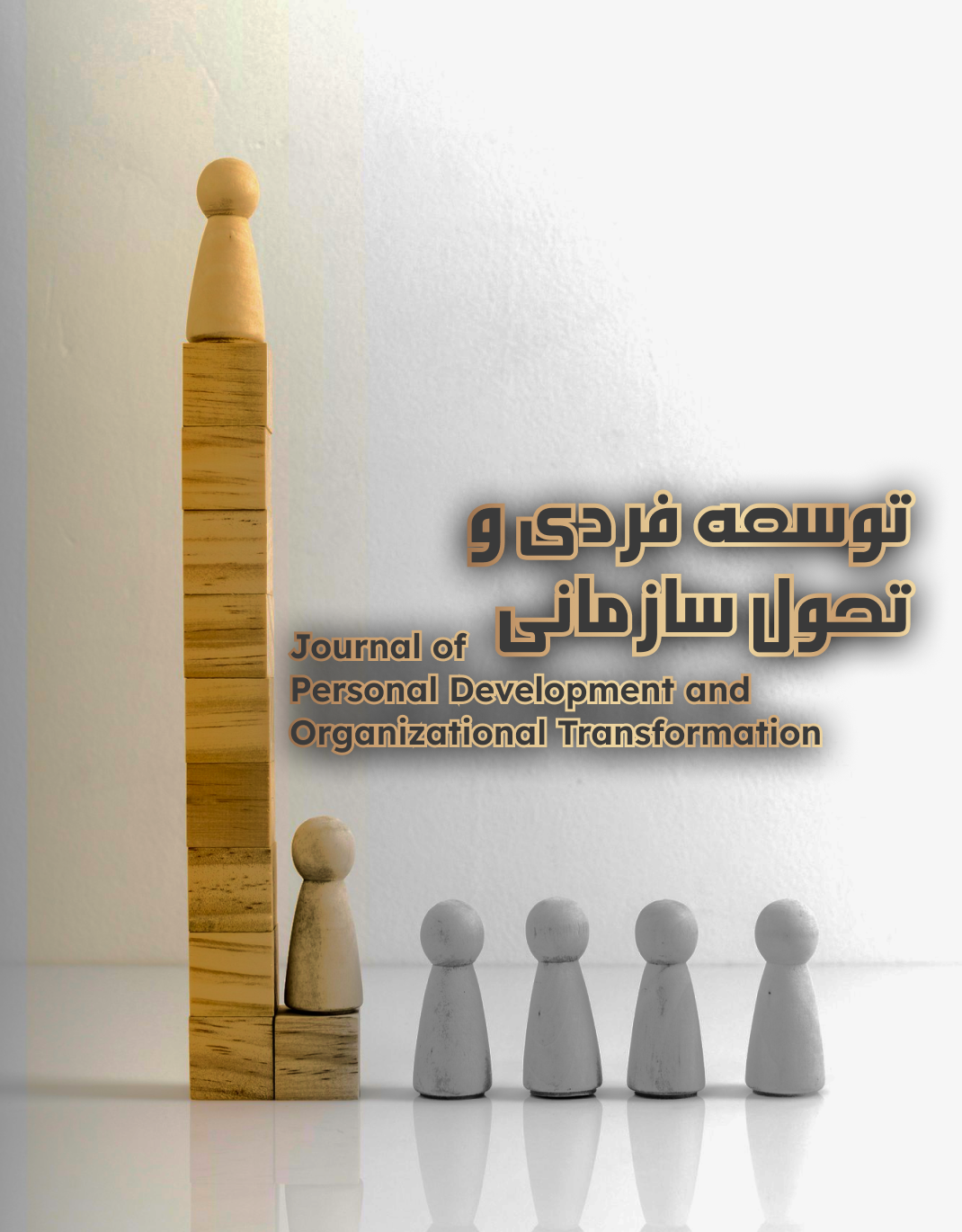Validation of the Conceptual Model of Blended Learning Among Nursing Students
Keywords:
Education based on a blended approach, Pedagogy of education, goals of education, Training objectives, Training content, Training methods, Lorestan University of Medical SciencesAbstract
The present study was conducted with the aim of validating a conceptual model of blended learning among nursing students at Lorestan University of Medical Sciences. In the qualitative phase, the statistical population included 15 experts and specialists in the field of medical education, as well as nursing department managers and faculty members with specific years of experience in medical education at Lorestan University of Medical Sciences. In the quantitative phase, the population consisted of all nursing students enrolled at Lorestan University of Medical Sciences during the 2022–2023 academic year. In this phase, the sample size was determined to be 209 using Cochran’s formula, and participants were selected through stratified random sampling. This study employed a mixed-methods approach. It was also categorized as fundamental research in terms of its objective and as descriptive-survey research in terms of data collection. The qualitative research tools included semi-structured interviews and a review of the literature and previous studies. In the quantitative phase, the data collection instrument was a researcher-made questionnaire with 41 items derived from the qualitative findings. The qualitative findings were analyzed using document analysis, library study, thematic analysis, and the Delphi method. In the quantitative phase, confirmatory factor analysis was employed to examine convergent validity and structural equation modeling, conducted using SPSS and AMOS software. The results of the qualitative phase revealed that the blended learning model emerged with five components: pedagogical strategies, educational objectives, instructional content, teaching methods, and educational evaluation. The findings from the quantitative data analysis showed that the model fit indices, except for the GFI and NFI indices, were above 0.90, indicating a satisfactory model fit. Furthermore, the model's chi-square value was less than 3, indicating that the empirical data appropriately support the study's conceptual model. Additionally, the Root Mean Square Error of Approximation (RMSEA) was around 0.05, further confirming the model’s fit. The model fit indices collectively indicated that the model achieved an adequate fit to the data. This section also included the visualization of the conceptual model and its evaluation using the Maximum Likelihood Estimation (MLE) method.
Downloads
References
Akbari Pourang, M., Ajam, A. A., Jafari Sani, H., Salabari, R., & Shokouhifard, H. (2016). Designing and validating a quality virtual teaching model in Iran's higher education system. Qualitative Research in Curriculum Studies, 1(2), 73-106. https://www.dfsr.ir/article_242407.html
Anthony, B., Kamaludin, A., Romli, A., Raffei, A. F. M., Abdullah, A., Ming, G. L., & Baba, S. (2019). Exploring the role of blended learning for teaching and learning effectiveness in institutions of higher learning: An empirical investigation. Education and Information Technologies, 24(6), 3433-3466. https://doi.org/10.1007/s10639-019-09941-z
Bhardwaj, P., Bhardwaj, N., Mahdi, F., Srivastava, J. P., & Gupta, U. (2015). Integrated teaching program using case-based learning. International Journal of Applied and Basic Medical Research, 5(Suppl 0), S70. https://doi.org/10.4103/2229-516X.162262
Boelens, R., Voet, M., & De Wever, B. (2018). The design of blended learning in response to student diversity in higher education: Instructors views and use of differentiated instruction in blended learning. Computers & Education, 120, 197-212. https://doi.org/10.1016/j.compedu.2018.02.009
Bonk, C. J., & Graham, C. R. (2011). The handbook of blended learning environments: Global perspectives, local designs. Jossey Bass / Pfeiffer. https://books.google.com/books?hl=en&lr=&id=mvfXEAAAQBAJ&oi=fnd&pg=PT14&dq=Bonk,+C.+J.+and+C.+R.+Graham+(2011).+The+handbook+of+blended+learning+environments:+Global+perspectives,+local+designs.+San+Francisco,+Jossey+Bass+/+Pfeiffer.+%09&ots=VuoiZSj2i9&sig=YSLSLvJoAzZncraZH_Z1qtzQMB8
Dadgaran, N., Bagheri, M., & Ahmadi, A. (2020). Identifying the dimensions and components for enhancing the medical education system at the international level using the Delphi technique. Research in Medical Education, 12(1), 52-77. https://doi.org/10.29252/rme.12.1.52
Ghorbani, S., Pishinian Pordanjani, M., Oloumi, F., & Piri, F. (2024). Investigating the Impact of Blended Learning in Iran's Education System. First International Conference on Education with an Approach to Smart Schools, Creative Teachers, and Thoughtful Students in the Horizon of 2025, https://civilica.com/doc/2177886
Ismail, A. O., Mahmood, A. K., & Abdelmaboud, A. (2018). Factors influencing academic performance of students in blended and traditional domains. International Journal of Emerging Technologies in Learning, 13(2), 170-187. https://doi.org/10.3991/ijet.v13i02.8031
Jowsey, T., Foster, G., Cooper-Ioelu, P., & Jacobs, S. (2020). Blended learning via distance in pre-registration nursing education: A scoping review. Nurse Education in Practice, 102775. https://doi.org/10.1016/j.nepr.2020.102775
Karimi, H., Kalati, S. H., Amini, S., & Jamalzadeh, N. (2021). The impact of blended learning on the nursing process: An educational evaluation study. Iranian Journal of Medical Education, 21(54), 533-536. https://ijme.mui.ac.ir/browse.php?a_id=5354&sid=1&slc_lang=fa
Karimi Moonghi, H., & Mohseni Zadeh, S. M. (2019). Integrated learning and its effectiveness in nursing education: A review study. Quarterly Journal of the Center for Studies and Development of Medical Education, 1, 29-40. https://www.sid.ir/paper/228752/fa
Liu, B. (2024). Research on Personalized Teaching Strategies Based on Learner Profiles in a Blended Learning Environment. International Journal of Information and Communication Technology Education, 20(1), 1-25. https://doi.org/10.4018/ijicte.346823
Liu, Y. (2024). The Impacts of Learning Motivation, Emotional Engagement and Psychological Capital on Academic Performance in a Blended Learning University Course. Frontiers in psychology, 15. https://doi.org/10.3389/fpsyg.2024.1357936
Mir-Moghtadaei, Z. S., & Ahmadi, S. (2019). The effectiveness of blended learning in medical education: Clarifying dimensions and components based on stakeholders' experiences. Journal of Medical Education Development, 12(33), 33-42. https://doi.org/10.29252/edcj.12.33.42
Oakley, G. (2016). From Diffusion to Explosion: Accelerating Blended Learning at the University of Western Australia (Blended, Issue.
Pourghan, P., Imami Sigaroodi, A., & Salari, A. (2018). Experiences of faculty members at Gilan University of Medical Sciences regarding participation in continuous education programs in 2016-2017: A qualitative study. Research in Medical Education, 10(1), 10-20. https://doi.org/10.29252/rme.10.1.20
Rajabian De Zireh, M., Nazari Shendi, M., Jangi Zahi, H. R., & Hoseini, S. M. A. (2021). The impact of blended learning on self-concept and academic motivation of students. Education in Police Sciences, 9(35), 1-180. https://sid.ir/paper/952086/fa
Sadeghi Tabr, P., & Shariati Mard, M. (2020). Designing and validating a model for continuous education in the medical community based on blended learning. Quarterly Journal of Educational Sciences and Psychology: Research in School and Virtual Learning, 8(1), 79-97. https://etl.journals.pnu.ac.ir/article_6947.html
Thahir, M., Widiawati, W., & Baitillah, N. (2023). The Post-Pandemic Education: A Blended Learning Approach for Teaching and Learning in Higher Education in the New Normal Era. International Journal of Ethno-Sciences and Education Research, 3(3), 99-108. https://doi.org/10.46336/ijeer.v3i3.461
Tong, Y., & Wei, X. (2020). Teaching design and practice of a project-based blended learning model. International Journal of Mobile and Blended Learning (IJMBL), 12(1), 33-50. https://doi.org/10.4018/IJMBL.2020010103
Wang, C., Omar Dev, R. D., Soh, K. G., Mohd Nasirudddin, N. J., Yuan, Y., & Ji, X. (2023). Blended learning in physical education: A systematic review [Systematic Review]. Frontiers in Public Health, 11. https://doi.org/10.3389/fpubh.2023.1073423
Wang, Y., Han, X., & Yang, J. (2015). Revisiting the blended learning literature: Using a complex adaptive systems framework. Journal of Educational Technology & Society, 18(2), 380-393. https://www.jstor.org/stable/pdf/jeductechsoci.18.2.380.pdf
Wichadeeq, S. (2017). A Development of the Blended Learning Model Using Edmodo for Maximizing Students' Oral Proficiency and Motivation. International Journal of Emerging Technologies in Learning, 12(2). https://doi.org/10.3991/ijet.v12i02.6324
Wilkes, S., Kazakoff, E. R., Prescott, J. E., Bundschuh, K., Hook, P. E., Wolf, R., & Macaruso, P. (2020). Measuring the impact of a blended learning model on early literacy growth. Journal of Computer Assisted Learning, 36(5), 595-609. https://doi.org/10.1111/jcal.12429
Williams, R. T. (2024). An overview of MOOCs and blended learning: integrating MOOC technologies into traditional classes. IETE Journal of Education, 65(2), 84-91. https://doi.org/10.1080/09747338.2024.2303040
Winarso, W., & Udin, T. (2024). Implementing Blended Learning Within the TPMK Framework to Enhance Mathematics Teachers' Competence. Edelweiss Applied Science and Technology, 8(4), 2292-2305. https://doi.org/10.55214/25768484.v8i4.1599
Zare, M., Nili, M. R., Ali Abadi, K., Zarei Zavarki, E., & Asgari, M. (2024). The effectiveness of a blended e-learning design model on academic performance of Farhangian University students. Educational and Instructional Studies(40), 126-136. https://pma.cfu.ac.ir/article_3895.html?lang=en
Zarebian, F., Saeed, N., & Goudarzi, M. (2017). Principles of Educational Planning. Payame Noor University Publications.
Downloads
Published
Submitted
Revised
Accepted
Issue
Section
License
Copyright (c) 2025 Nahid Dehghankar (Author); Mehry Daraei; Hossein Mehrdad (Author)

This work is licensed under a Creative Commons Attribution-NonCommercial 4.0 International License.







